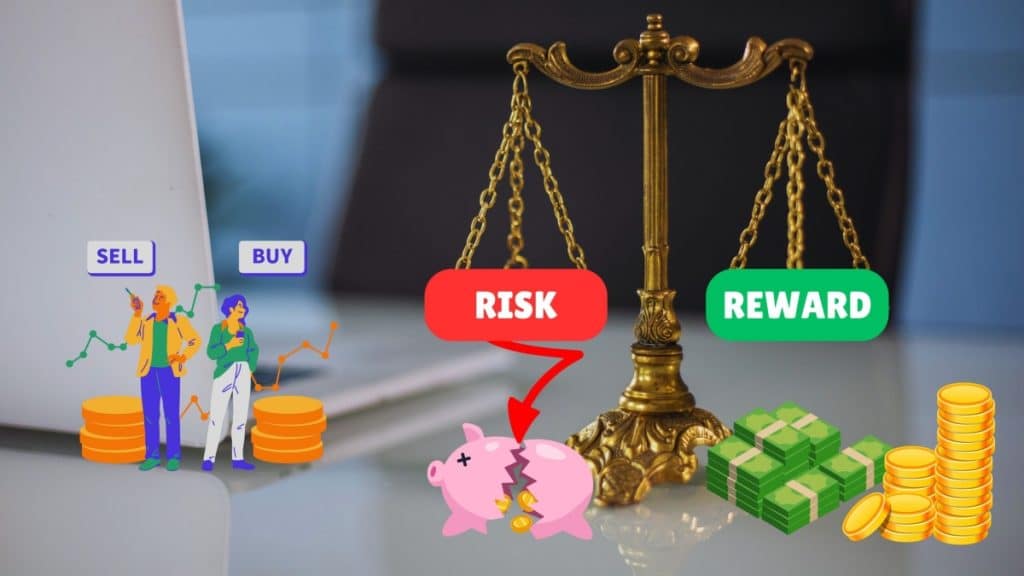Discover the power of the 2:1 risk-reward ratio, a key strategy in smart trading. This simple yet effective rule helps traders balance potential gains and losses, boosting confidence and discipline. Whether you’re new to trading or a seasoned pro, understanding and applying this ratio can enhance your success in various market conditions. Visit https://proficator.com, if you are looking for a reliable trading platform online.
The 2:1 Risk-Reward Ratio: A Gold Standard in Trading
Explanation of the 2:1 Ratio
A 2:1 risk-reward ratio means that for every dollar you risk, you aim to make two dollars. This ratio is a popular guideline among traders. It helps them decide if an investment is worth pursuing. If a potential gain doesn’t double the risk, it might not be the best choice. This rule is simple but powerful. It sets clear profit targets and loss limits, making it easier to stick to a trading plan. Why is it so popular? Because it balances potential reward with risk, helping traders make smarter decisions.
Comparison with Other Common Risk-Reward Ratios
Other ratios like 1:1 or 3:1 also exist. A 1:1 ratio means the potential gain equals the potential loss. This might seem balanced, but it often requires a higher win rate to be profitable. A 3:1 ratio, on the other hand, seeks to triple the risked amount. While this offers higher rewards, it may lead to fewer trading opportunities. The 2:1 ratio strikes a balance between these extremes. It allows for reasonable profits while managing risk. It is easy to understand and apply, making it a favorite among traders.
Psychological and Strategic Benefits of a 2:1 Risk-Reward Ratio
Enhancing Trader Confidence and Discipline
Using a 2:1 ratio helps build confidence. It gives traders a clear framework for their decisions. Knowing that every trade has a structured risk and reward can reduce anxiety. It promotes discipline by encouraging traders to stick to their plans. When traders follow this rule, they are less likely to make impulsive decisions. This disciplined approach can lead to more consistent trading results over time.
Mitigating Emotional Decision-Making
Trading can be emotional. Fear and greed often drive decisions. A 2:1 ratio helps mitigate these emotions. By having preset risk and reward levels, traders are less likely to react impulsively. This ratio acts like a safety net, reminding traders of their limits. It encourages them to take calculated risks, not emotional ones. Over time, this can lead to more rational and successful trading behavior.
Mathematical Justification for the 2:1 Risk-Reward Ratio
Statistical Analysis and Probability Theory
The math behind the 2:1 ratio is straightforward. If you win half your trades with this ratio, you still come out ahead. Let’s break it down: suppose you make ten trades, risking $100 each time. If you win five trades and lose five, your gains are $1,000 ($200 profit per trade) and your losses are $500. Even with a 50% win rate, you make a net profit of $500. This simple math shows why the 2:1 ratio works. It leverages probability to your advantage.
Case Studies Demonstrating Mathematical Efficacy
Many successful traders use the 2:1 ratio. Consider a trader who makes 100 trades a year, winning 40 and losing 60. With a 2:1 ratio, the trader still profits. Winning trades bring in $8,000 ($200 per trade) while losses cost $6,000 ($100 per trade), resulting in a $2,000 profit. This example highlights the ratio’s effectiveness. It shows that even with a less than perfect win rate, traders can be profitable. Real-world data backs this up, showing consistent results over time.
Application in Various Trading Styles and Market Conditions
Day Trading, Swing Trading, and Long-Term Investing
The 2:1 ratio isn’t limited to one style of trading. Day traders, who make quick, short-term trades, often use it to set tight stop losses and profit targets. Swing traders, who hold positions for days or weeks, also find it useful. It helps them balance risk and reward over longer periods. Even long-term investors can apply this ratio. It guides their decisions, ensuring that potential gains justify the risks taken.
Adapting the Ratio to Bullish, Bearish, and Volatile Markets
Markets are always changing. Bullish markets are rising, bearish markets are falling, and some markets are simply volatile. The 2:1 ratio can adapt to all these conditions. In a bullish market, it helps maximize gains by setting higher profit targets. In a bearish market, it limits losses, preserving capital. In volatile markets, it provides a stable framework amidst chaos. By sticking to the 2:1 ratio, traders can navigate different market conditions more effectively.
Conclusion: The Enduring Value of the 2:1 Risk-Reward Ratio
Using the 2:1 risk-reward ratio is a smart strategy for traders. It provides a clear, simple rule for making decisions. It helps manage emotions, build discipline, and improve confidence. The math behind it is solid, and it works in various trading styles and market conditions. For those looking to improve their trading, understanding and applying this ratio is a great place to start. Always remember, consulting with financial experts and continuous research can enhance your trading strategies.
